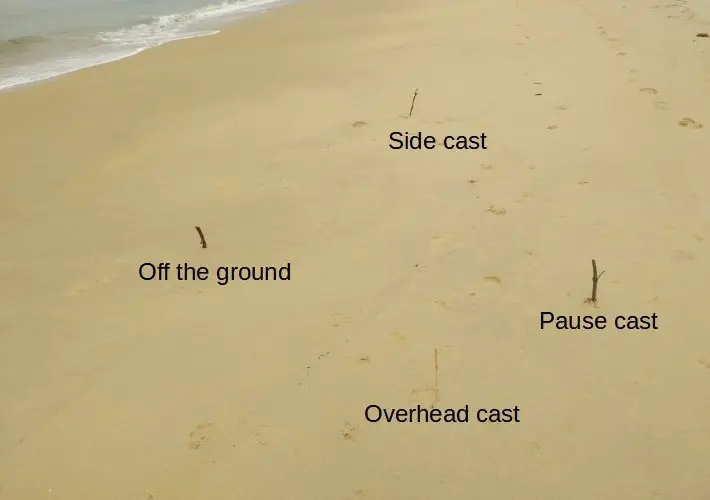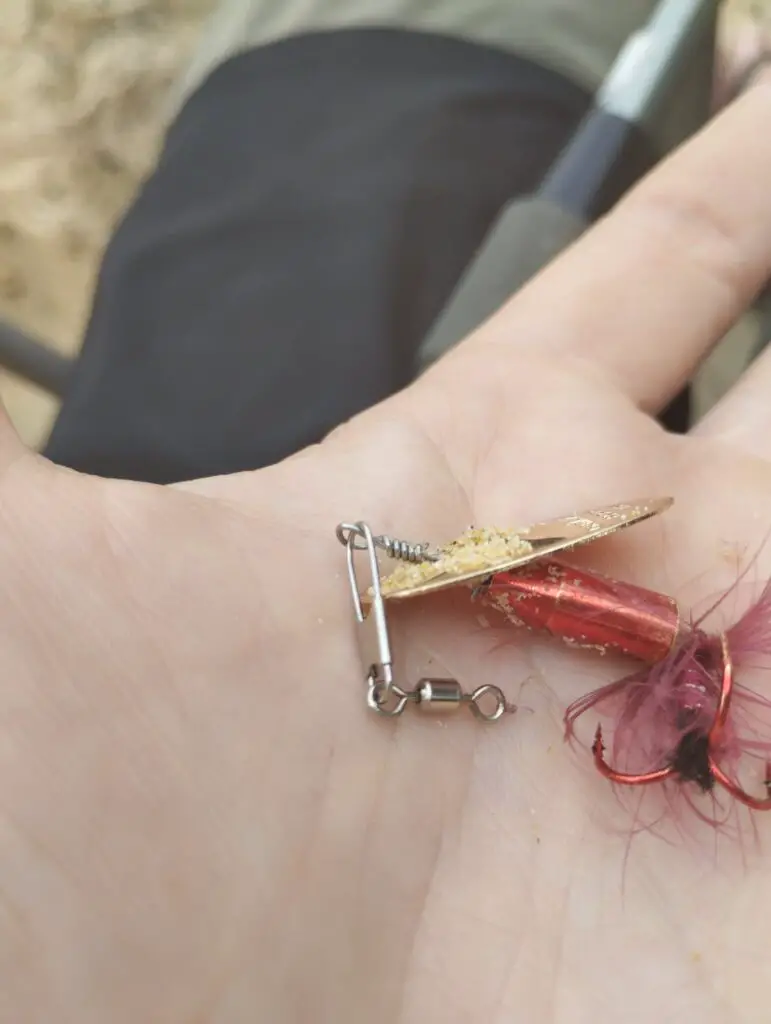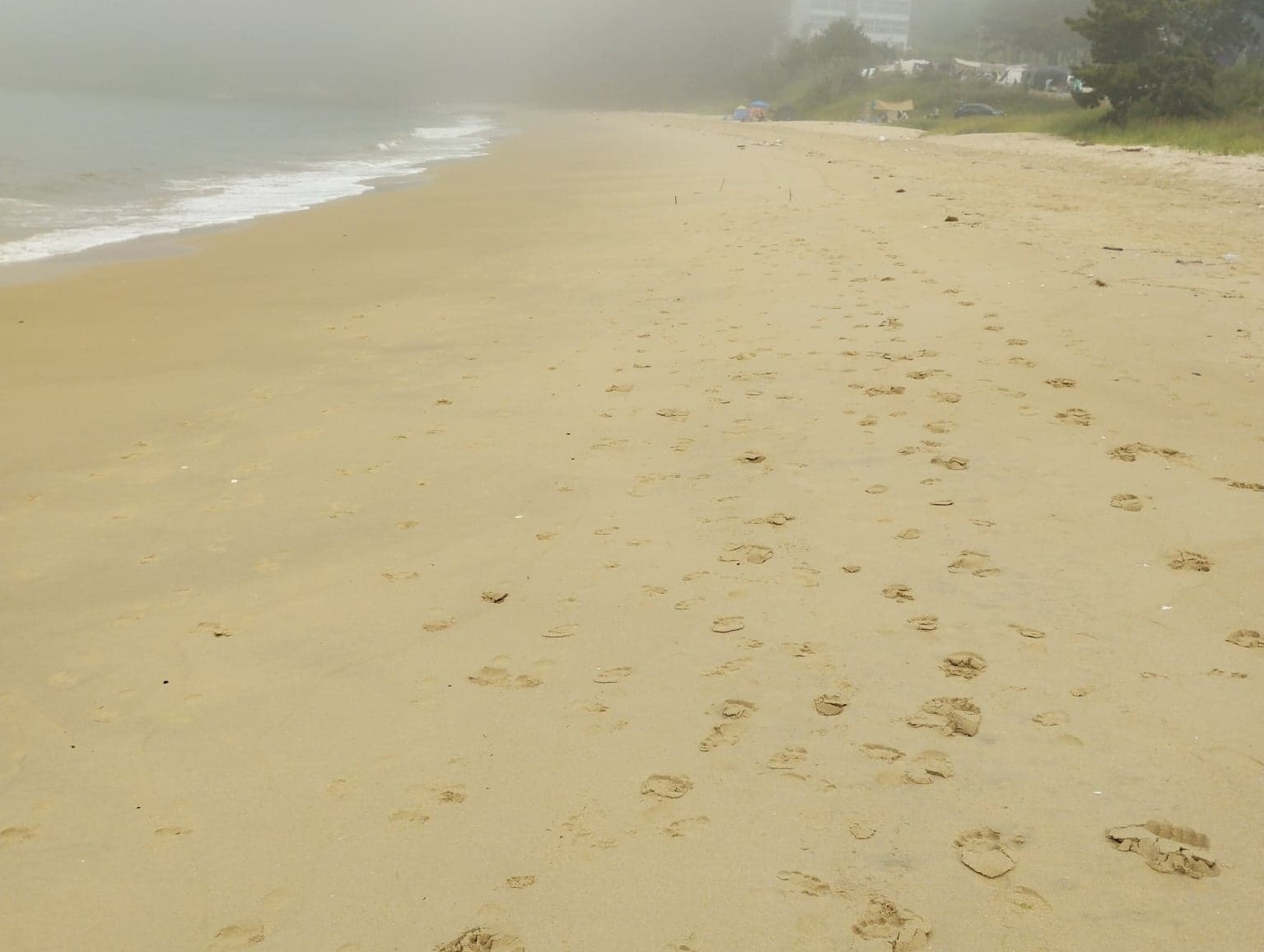It is difficult to cast ultralight tackle far, and the lighter the tackle the more difficult it becomes. So every few feet of extra distance might mean the difference between landing your lure where the fish are feeding or falling short.
Due to the lake being too rough for fishing I decided over the weekend, to try and get a more definitive answer to the question of what is the best cast for distance when fishing ultralight tackle.
The two basic casting techniques
Overhead Cast
This is a basic vertical cast and is one of the first casts most anglers learn. It is one of my bread and butter casts and the casting style I use most frequently. It is very accurate and is a great option to use when casting around other people.
Start with the rod directly over your shoulder, with about a foot of line hanging free. Then in a smooth steady movement cast the rod forwards and release the line at about the 10 o’clock position.
If you release too early, the lure will cast high, causing it to lose a lot of momentum as it gains altitude, if released too late the lure will shoot toward the ground. To achieve the maximum distance the aim is to cast slightly above the horizontal.
Side Cast
The side cast is another essential cast to learn, rather than holding the rod over the shoulder, start by holding the rod horizontally just above hip height, then reach behind before casting in a sidewise motion. The further behind the cast starts, the more power it will generate. (Yeah, I probably did a terrible job explaining it)
It is possible to cast short little flips in confined places, but in an open area, it is possible to cast a full rotation, even including some body rotation to add additional power.
One of the biggest advantages of the side cast is that it starts from a horizontal position the lure is already positioned at the correct angle to maximize horizontal flight. It is very unlikely to cast high or low.
Two advanced casting techniques
In this section, I will discuss a couple of more advanced casting techniques that are not typically used with ultralight tackle, but I decided to give them a try anyway just to see if they make a difference. Both of these techniques are variations of the overhead cast.
In general, I do not recommend using the OTGC or other advance surfcasting techniques (pendulum cast) with ultralight tackle. They are excessive.
Off The Ground Cast
This is a surf casting technique designed to generate maximum power and extremely long casts.
Start with the lure laying on the ground and a bit to the side behind the far shoulder. Cast with an extremely long arc. When done correctly, and with the right rod and reel it can generate an enormous amount of power and extremely long casts.
The off the ground cast (OTGC) is not a useful cast for trout fishing. Firstly, it requires a smooth surface (Such as a sandy beach). Secondarily, ultralight rods do not require a significant amount of power to fully load them to achieve maximum distance, the OFTG is overkill.
I decided on the OTGC cast rather than the more powerful Pendulum cast because I can perform it much more consistency. The Pendulum cast is also unlikely to be suitable for ultralight fishing.
Pause Cast
I do not know what to call this cast, but I learned it from this salt strong video. This cast in many ways resembles a fly fishing cast, where you start by lifting the rod and pausing at about the 1 o’clock position and allowing the lure to fully load the rod before casting forward and releasing.
This technique does generate a lot of instantaneous power and can result in more distance. In my testing, it is not suitable for ultralight line because the sudden onset of power is too much for 4lb test to handle and break-offs are common.
During my 10 test casts on the weekend, I had two lures break off. These were the only break-off all day. I did find one of the lures, it broke about a quarter of an inch above the knot.
Method – Including my casting set-up
I used a fairly standard 7ft composite spinning rod with a 2000-size reel spooled with 4lb (0.165mm) monofilament line. This is not a high-performing casting set-up, but rather something someone new to fishing might choose to use. If I was using a high modular graphite rod, and braid I probably could double these distances. (Maybe a test for another time)
My lure of choice was an off-brand 1/4oz inline spinner, I used a 1/4oz lure to achieve slightly longer casts and to help minimize any interference from the wind.
I used an off-brand lure, simply because I did not want to risk losing or damaging a quality one.
I started casting using the overhead cast and cycled through the styles one after the other. Every time I achieve a new distance record for a style I will walk down and mark the location.
I made sure to complete 10 casts with every style. Although I had to complete 12 casts with the Pause Cast technique due to breakages.
The results. Which cast casts the furthest?

Enough explanations and descriptions. I will now present the results.
| Meters | Feet | |
| Overhead Cast | 33 | 108 |
| Side Cast | 39 | 127 |
| Off The Ground Cast | 35.5 | 116 |
| Pause Cast | 35.2 | 115 |
The side cast was best for distance
The side cast was the clear winner for distance and was the second most accurate of all of the casts. The side cast beats the overhead cast when all your care about is distance.
It also consistently beat the OTGC and the Pause cast.
I will note, that only one of my 10 casts made it beyond 120ft, but there was a real cluster around 115-120ft. I also do not know why that one cast went so much further, maybe it was just the perfect cast.
All but one of my 10 casts exceeded the 108ft maximum of the overhead cast. This result confirms my previous experiences.
The overhead cast was the most accurate and consistent
The overhead cast was the most consistent for distance, but with my setup, I struggle to get beyond 108ft. Even after completing the 10 tests cast, I trialed even more variations, from using longer lines, or releasing the line at different angles but could not inch out any significant improvements.
Leave the Off The Ground Cast for the surf beach
I have never seen anyone attempt an OTGC while trout fishing, or any freshwater fishing for that matter. I just wanted to know if a cast designed to work with long surfcasting rods could be used with ultralight trout fishing tackle.
The OTGC did outdistance the standard overhead cast and it did so with quite a bit of consistency. But there was a significant drop in accuracy, and to be honest, I always find the OTGC to be a bit scary. There is simply so much excess line swinging around behind my back. It also only works off a flat sandy beach.
This cast is not really suitable for trout fishing.
The pause cast is too powerful for ultralight line.
The pause cast consistently outcast the standard overhead cast and certainly did generate a lot of power. It was fully loading my rod. But there was simply too much sudden power for my 4lb monofilament line to handle, so it kept on snapping. For this reason, I do not consider it suitable for fishing when using lightweight line.
The pause casting technique likely works fine with heavier lines or with a shock leader, but I do not see it as a viable option when fishing for trout with ultralight gear. After one break-off, I eventually found the lure 180ft down the beach.

Conclusion
- The best cast for distance was the side cast, it consistently outperformed the overhead cast traveling around 15% further. It also achieved the longest cast on the day.
- Accuracy was fairly consistent between both the side and overhead casts with a slight advantage to the overhead cast.
- Under normal fishing conditions, the few extra yards of distance is probably not that significant and the increase accuracy of the overhead cast might make it the more useful technique.
- The pause cast generates too much power to use with ultralight line. It probably works well with heavier tackle
- The OTGC is not suitable for trout fishing, and offered no advantage over the side cast. Leave it to the surfcasters and their 13ft+ long rods.
- For more advice on extending your cast check my guide here where I explain 9 ways to increase your casting distance.

